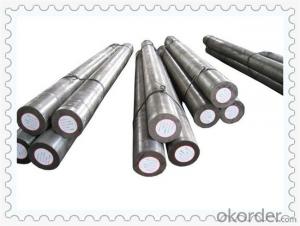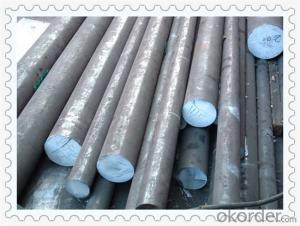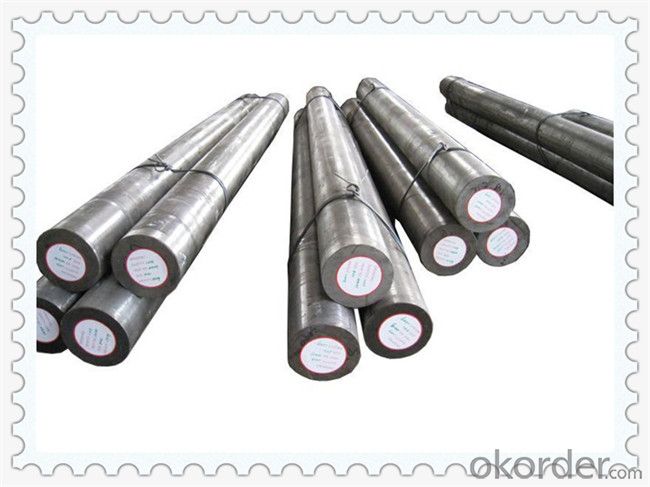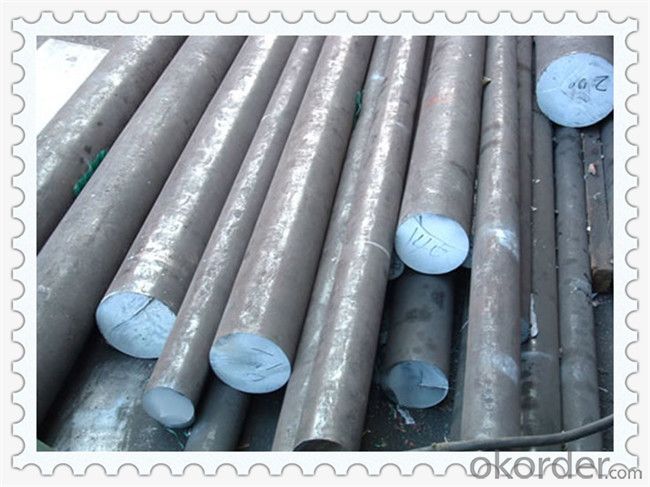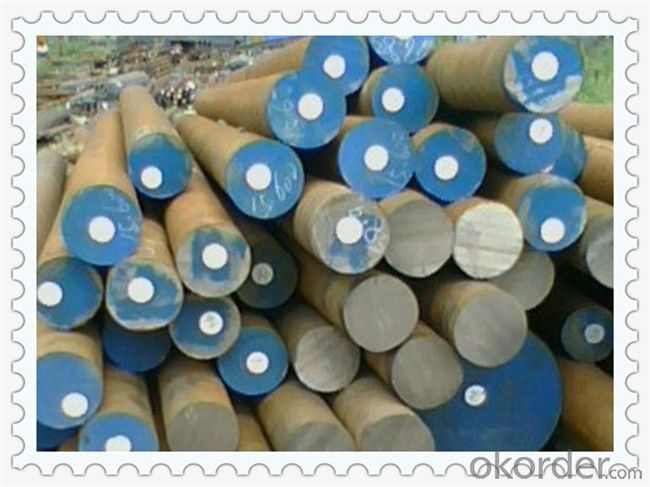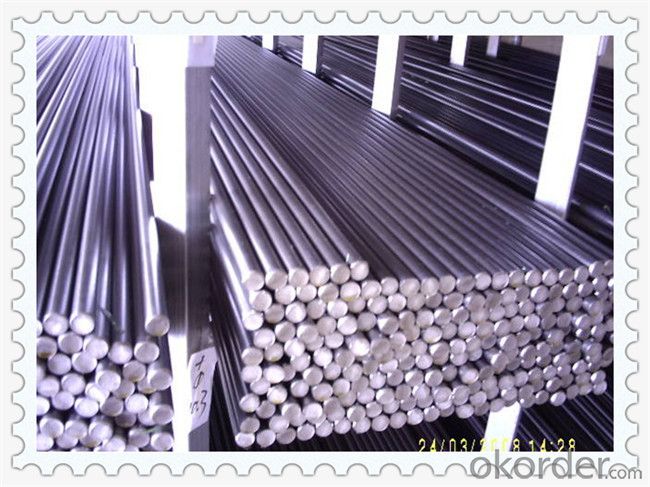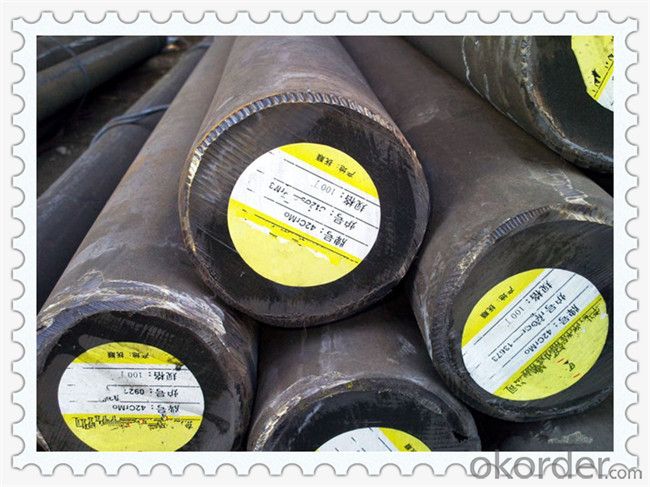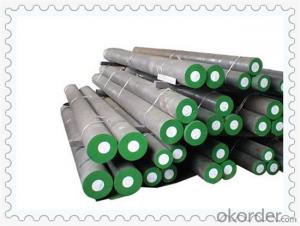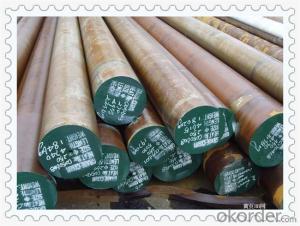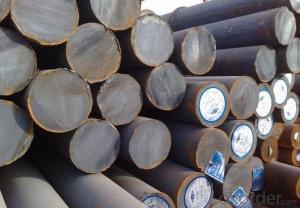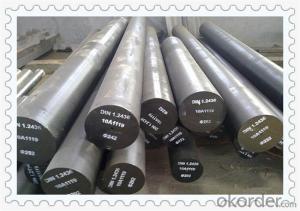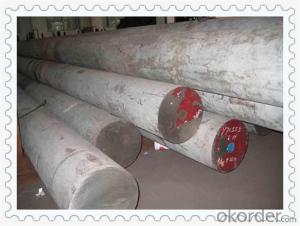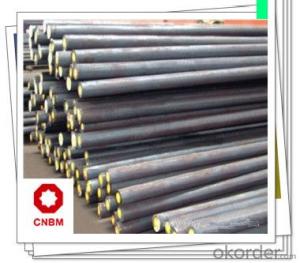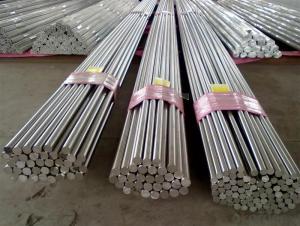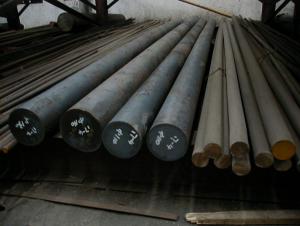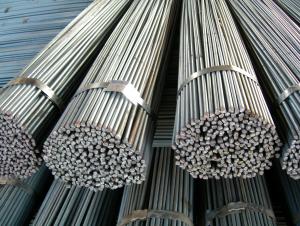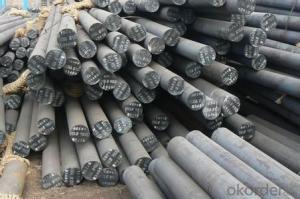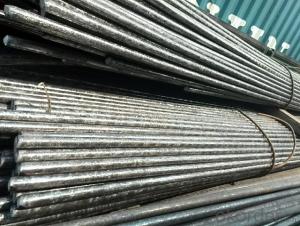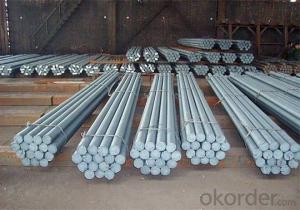1040 Carbon Structural Steel Round Bars
- Loading Port:
- China main port
- Payment Terms:
- TT OR LC
- Min Order Qty:
- 30 m.t.
- Supply Capability:
- 10000 m.t./month
OKorder Service Pledge
OKorder Financial Service
You Might Also Like
1040 Carbon Structural Steel Round Bars
Products Details
Mild steel is sometimes referred to as carbon steel or plain steel. Typically, it is stiff and strong. Carbon steels do rust easily, but they can be easily painted or primed. They are cheap so they are the normal choice for most fabrications. Mild Steel can be easily cut or drilled to meet your requests.
Mild Steel Round Bar is used for making security grills, screens, Construction and Machine Manufacture.
Material: Q195; Q235; A36; SS400; ST37; SAE1006/1008; S275JR; 20#; 45#; Q345,S355JR; 16Mn; ST52;
42CrMo; 40CrNiMo etc.
1. Sizes Information
| Sizes detalis | diameter | 16-320mm |
| length | 3-12m(canbe customerized) | |
| Sizes tolerance | length | +/-100mm |
| Straightness | 3mm/m |
2. Grade Comparison
| GB | ASTM | JIS | DIN | BS | NF |
| 40# | 1040 | S40C | C40 | IC40080M40 | C40 |
3. Chemical Composition
| C | Si | Mn | Cr(≤) | Ni(≤) | Cu(≤) |
| 0.37-0.44 | 0.17-0.37 | 0.5-0.8 | 0.25 | 0.3 | 0.25 |
4. Mechanical Properties
| Tensile Strength(Mpa) | Yield Strength(Mpa) | Elongation | Shrinkage | Akv(J) | ||||
| 570 | 335 | 19 | 45 | 47 | ||||
Products Show
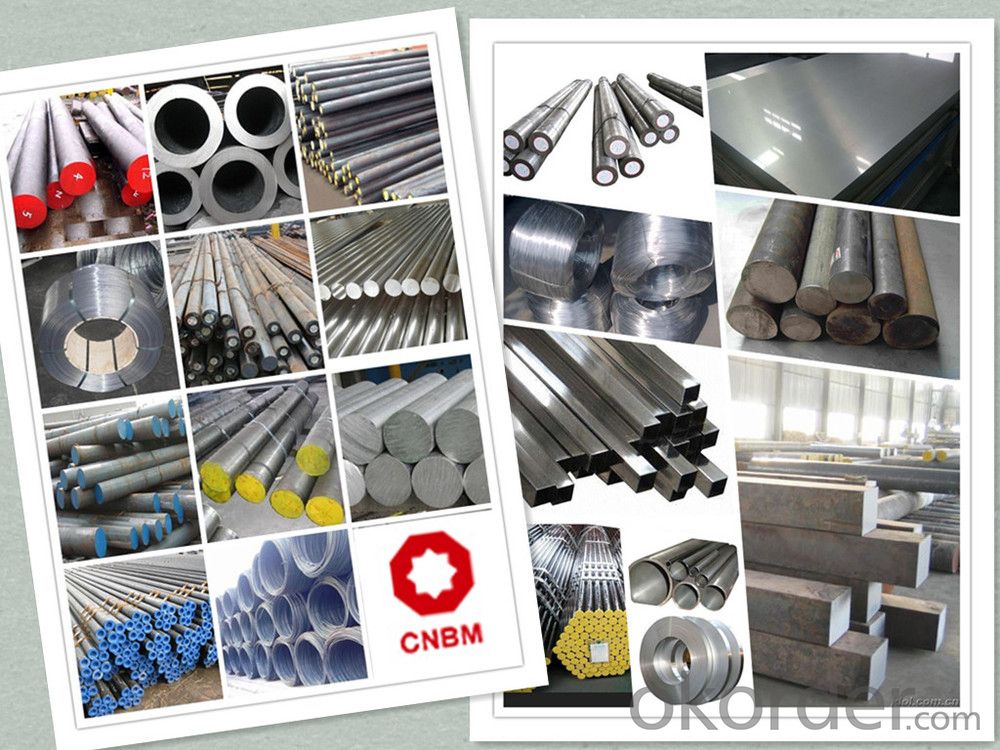
Product Overviews
| Product Name | Typical Grades | Diameter(mm) | Standard adopted |
| Carbon Steel | 20 (1020/S20C/C22) | Ø16-Ø300 |
GB/SAE/JIS/DIN
|
| 40 (1040/S40C/C40) | |||
| 45 (1045/S45C/C45) | |||
| Bearing Steel | GCr9 (51100/SUJ1) | Ø12-Ø250 | |
| GCr15 (52100/SUJ2/100Gr6) | |||
| GCr9SiMn (A485-Gr.1/SUJ3) | |||
Cr-Mo Steel | 20Cr (5120/SCr420H/20Cr4) | Ø12-Ø250 | |
| 40Cr (5140/SCr440/41Cr4) | |||
| 42CrMo(4140/SCM440/42CrMo4) | |||
| Gear Steel | 20CrNiMo | Ø16-Ø600 | |
| 20CrMn(5115/SMnC420/20MnCr5) | |||
| 20CrNiMo(8620/SNCM220/20CrMiMo2) |
Application
| Carbon Steel | Mold bottom, Plastic mold, Construction machinery parts Automobile parts, Security grills, Screens, Construction |
| Bearing Steel | Aerospace, Navigation, Nuclear energy, Chemical industry Electronic information, Petrochemical, Instrument and meter Transportation |
| Cr-Mo Steel | Mechanism & Fasteners gear, Stressed components for vehicles Engines and machines, Parts of larger cross-section |
| Gear Steel | All kinds of gears, Statically and dynamically stressed component for vehicles Engines and machine, Larger cross-section parts, Crankshafts |
Work Shop
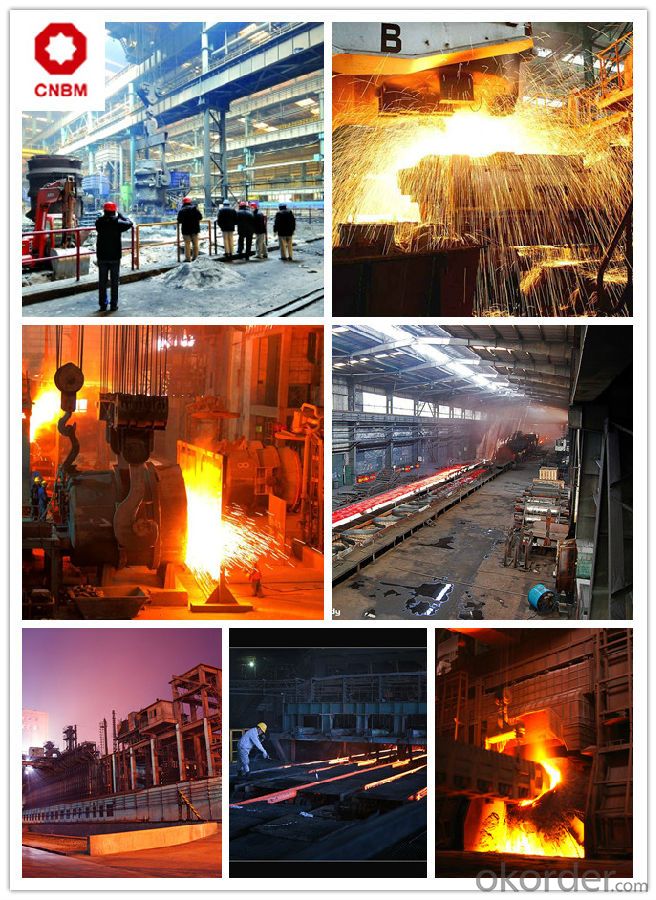
Company Information
CNBM International Corporation is the most important trading platform of CNBM group.
Whith its advantages, CNBM International are mainly concentrate on Cement, Glass, Iron and Steel, Ceramics industries and devotes herself for supplying high qulity series of refractories as well as technical consultancies and logistics solutions.

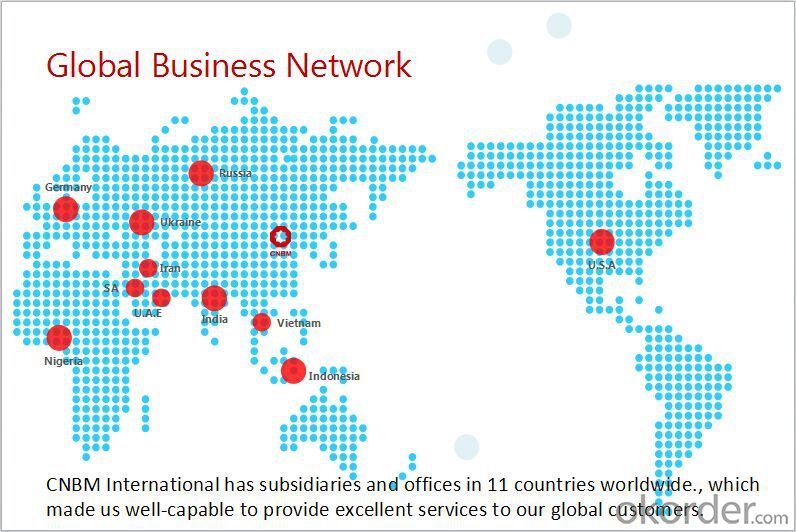
FAQ
1, Your advantages?
professional products inquiry, products knowledge train (for agents), smooth goods delivery, excellent customer solution proposale
2, Test & Certificate?
SGS test is available, customer inspection before shipping is welcome, third party inspection is no problem
3, Factory or Trading Company?
CNBM is a trading company but we have so many protocol factories and CNBM works as a trading department of these factories. Also CNBM is the holding company of many factories.
4, Payment Terms?
30% TT as deposit and 70% before delivery.
Irrevocable L/C at sight.
5, Trading Terms?
EXW, FOB, CIF, FFR, CNF
6, After-sale Service?
CNBM provides the services and support you need for every step of our cooperation. We're the business partner you can trust.
For any problem, please kindly contact us at any your convenient time.
We'll reply you in our first priority within 24 hours.
Packaging & Delivery
1, Packaging: seaworthy package or as required
2, Delivery: 35-45 days or based on quantity
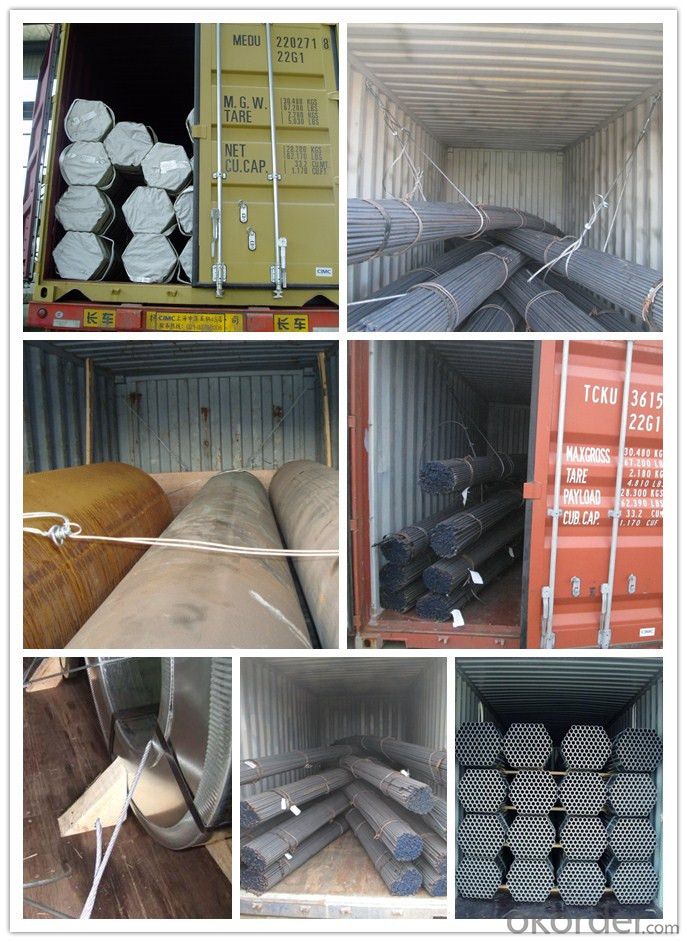
- Q: What are the chemical composition requirements for steel round bars?
- The chemical composition requirements for steel round bars generally include a specific range of elements such as carbon, manganese, phosphorus, sulfur, silicon, and sometimes additional elements like chromium, nickel, and molybdenum. These requirements are defined by various international standards and specifications, ensuring the desired mechanical properties and performance of the steel.
- Q: How do you measure the straightness tolerance of a steel round bar?
- To measure the straightness tolerance of a steel round bar, you can use a straightness measuring instrument such as a straight edge or a laser alignment tool. By placing the instrument along the length of the bar, any deviations from straightness can be observed and measured. The maximum allowable deviation from a perfectly straight line, known as the straightness tolerance, is typically specified in the industry standards or customer requirements.
- Q: Can steel round bars be used in the production of medical equipment?
- Medical equipment can indeed utilize steel round bars. This is because steel is a widely employed material in the production of medical devices and equipment. Its strength, durability, and versatility make it a popular choice. By utilizing steel round bars, one can fashion various components of medical equipment, including surgical instruments, orthopedic implants, diagnostic tools, and hospital furniture. Steel possesses desirable properties, such as resistance to corrosion and the ability to be sterilized, rendering it suitable for use in the medical sector where hygiene and patient safety are paramount. Furthermore, steel round bars can be easily machined and fabricated into different shapes and sizes, allowing for the customization of medical equipment to fulfill specific requirements.
- Q: What is the difference between a polished and a cold drawn steel round bar?
- A polished steel round bar is a steel bar that has undergone a polishing process. This process involves using abrasive materials to remove any surface imperfections and create a smooth, shiny finish. The purpose of polishing is to enhance the visual appearance and corrosion resistance of the steel bar. It is commonly used for decorative or architectural purposes where aesthetics are important. On the other hand, a cold drawn steel round bar is produced using a different manufacturing process. In this method, a steel bar is pulled through a die at room temperature to reduce its diameter and increase its length. This process results in a bar with a more precise and uniform diameter, as well as improved mechanical properties such as higher tensile strength and dimensional accuracy. Cold drawing also improves the surface finish, although it may not achieve the same level of smoothness and shine as a polished bar. In summary, the main distinction between a polished and a cold drawn steel round bar lies in the manufacturing process and the resulting properties. Polishing is done for aesthetic purposes, creating a smooth and shiny finish. On the other hand, cold drawing is performed to enhance the dimensional accuracy and mechanical properties of the steel bar.
- Q: Can steel round bars be coated with protective finishes?
- Steel round bars can indeed have protective finishes applied to them. Applying protective finishes to steel round bars is a widespread practice aimed at improving their durability and resistance to corrosion. There are several options available for protective finishes, such as galvanizing, powder coating, and epoxy coating, among others. These finishes effectively safeguard the steel bars against rust and deterioration, thus prolonging their lifespan and enabling them to perform well in different environments. The selection of a protective finish depends on various factors, including the intended use of the steel round bars, the extent of exposure to moisture or corrosive substances, and the desired aesthetic appeal.
- Q: How are steel round bars used in the manufacturing of mining equipment?
- Steel round bars are commonly used in the manufacturing of mining equipment due to their high strength and durability. These bars are often utilized as a key structural component in the construction of heavy machinery such as crushers, drilling rigs, and conveyor systems. They provide the necessary support and stability required to withstand the harsh operating conditions and heavy loads typically encountered in mining operations. Additionally, steel round bars can be machined and shaped to create various components such as shafts, pins, and gears, further enhancing the functionality and reliability of mining equipment.
- Q: Can steel round bars be used in marine environments?
- Yes, steel round bars can be used in marine environments. However, it is important to choose the right type of steel that is specifically designed for marine applications. Stainless steel is the most commonly used type of steel in marine environments due to its corrosion-resistant properties. It contains a high percentage of chromium, which forms a protective oxide layer on the surface of the steel, preventing corrosion from saltwater and other harsh elements. Additionally, stainless steel round bars are known for their strength and durability, making them suitable for various marine applications such as shipbuilding, offshore structures, and marine equipment. Regular maintenance and proper care are also essential to ensure the longevity and performance of steel round bars in marine environments.
- Q: What are the different surface roughness options for steel round bars?
- There are several different surface roughness options available for steel round bars. These options are typically determined by the manufacturing process and the desired end-use of the steel bars. 1. Hot Rolled: Hot rolled steel round bars have a rough and scaled surface finish. This is due to the high temperature at which the bars are formed, which causes the surface to oxidize and form a layer of scale. This roughness can vary depending on the specific manufacturing process. 2. Cold Drawn: Cold drawn steel round bars are processed at room temperature, resulting in a smoother surface finish compared to hot rolled bars. The cold drawing process involves pulling the steel bars through a die to reduce their diameter, resulting in a more uniform and consistent surface roughness. 3. Peeled and Polished: Peeled and polished steel round bars undergo a secondary process to remove the outer layer of scale or surface defects. This process typically involves peeling the outer layer and then polishing the surface to achieve a smoother and more refined finish. This option provides a high-quality surface with minimal imperfections. 4. Ground: Ground steel round bars are processed through a grinding machine to achieve a precise and smooth surface finish. This process removes any surface defects and irregularities, resulting in a consistent and uniform surface roughness. Ground bars are often used in applications where dimensional accuracy and a smooth surface are required. 5. Turned and Polished: Turned and polished steel round bars are processed on a lathe machine, where the outer layer is removed by turning the bars against a cutting tool. This process results in a smooth and polished surface finish. Turned and polished bars are commonly used in applications where aesthetics and a high-quality surface finish are important. Overall, the choice of surface roughness option for steel round bars depends on the specific requirements of the application. Factors such as dimensional accuracy, surface finish, and aesthetics play a role in determining the most suitable option for a given use case.
- Q: Can steel round bars be used for making electrical components?
- Steel round bars can be used for making certain electrical components, but it depends on the specific requirements and applications. Steel is a versatile material with good electrical conductivity and high durability, making it suitable for various electrical applications. However, for certain components that require specific electrical properties or insulation, other materials such as copper or aluminum may be more commonly used. Additionally, steel round bars may need to undergo surface treatments or coatings to prevent corrosion or improve electrical conductivity. Ultimately, the suitability of steel round bars for making electrical components should be assessed based on the specific requirements and regulations of the intended application.
- Q: Can steel round bars be used for making cutlery or kitchen utensils?
- Certainly, cutlery or kitchen utensils can indeed be crafted using steel round bars. Steel is a favored option for kitchen utensils due to its robustness, endurance, and ability to resist corrosion. Nevertheless, the specific steel variant and the manufacturing process employed will determine its suitability for culinary purposes. Stainless steel, for instance, is highly recommended for cutlery and kitchen utensils due to its resistance to rust and stains, effortless cleaning, and non-reactivity with food. Moreover, steel round bars can be effortlessly molded and shaped into a myriad of utensil designs, rendering them an adaptable material for the production of cutlery and kitchenware.
Send your message to us
1040 Carbon Structural Steel Round Bars
- Loading Port:
- China main port
- Payment Terms:
- TT OR LC
- Min Order Qty:
- 30 m.t.
- Supply Capability:
- 10000 m.t./month
OKorder Service Pledge
OKorder Financial Service
Similar products
Hot products
Hot Searches
Related keywords
